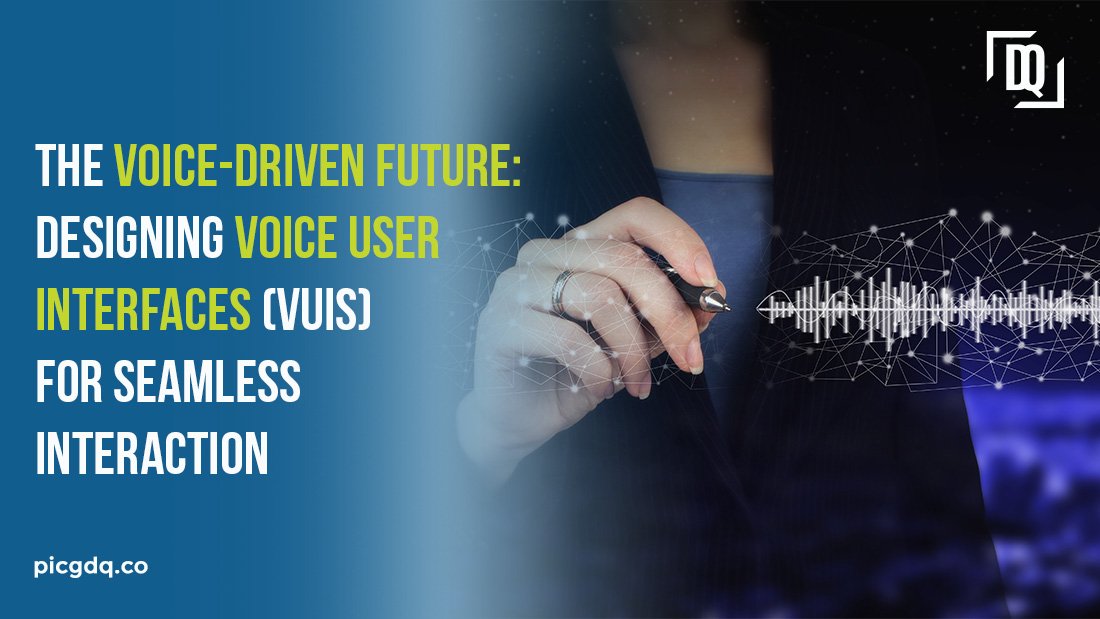Published on 06 Feb, 2024

In a world where our voices carry more weight than ever, it's no surprise that the future is echoing with the sound of change. We're stepping into an era where talking to our devices is not just a possibility but a reality.
Welcome to the UX/UI Designing, where Designing Voice User Interfaces (VUIs) takes center stage, creating a seamless interaction between humans and technology. The global VUI market is expected to reach $25.3 billion by 2025, growing at a CAGR of 23.4% from 2021 to 2025.
In this blog post, we'll show how this evolving technology is shaping the way we interact with our digital companions.
Voice User Interfaces (VUIs) have rapidly transitioned from a sci-fi dream to an integral part of our daily lives. From virtual assistants on smartphones to smart speakers in our homes, the rise of voice interaction is undeniable.
According to recent studies, the global voice and speech recognition market is expected to reach new heights, driven by the increasing demand for hands-free and natural interaction with technology.
So, what exactly are VUIs, and how do they work? In simple terms, VUIs allow users to interact with devices and applications using their voice as the input. Instead of typing or clicking, you can ask questions, give commands, and receive responses through spoken language. Designing effective VUIs involves creating a user-friendly and intuitive experience that mimics natural conversations.
Amazon Echo and Google Home: These voice-activated smart speakers have become household companions, allowing users to play music, set reminders, ask questions, and control smart home devices using just their voice.
Virtual Assistants: Siri and Google Assistant: Virtual assistants on smartphones have evolved into powerful VUIs. 67% of smart speaker owners use voice commands for daily tasks like setting alarms, playing music, and checking the news.
BMW Intelligent Personal Assistant: Modern vehicles are embracing VUIs to enhance driver safety and convenience. BMW's Intelligent Personal Assistant lets drivers control in-car functions using voice commands, from adjusting the temperature to getting navigation directions.
Voice Memos and Dictation: Everyday apps like voice memos and dictation tools leverage VUIs, allowing users to record thoughts or transcribe text without the need for a keyboard.
Natural Language Understanding (NLU): VUIs should understand and interpret user input in a way that feels natural. Advanced NLU technology enables systems to comprehend context, colloquial language, and user intent.
Feedback and Confirmation: Providing clear and concise feedback is crucial for a positive user experience. VUIs should confirm user commands, offer relevant information, and guide users through the interaction.
Personalization: Tailoring the VUI experience to individual users enhances personalization. Learning from user preferences and adapting to their unique conversational style creates a more engaging and efficient interaction.
Error Handling: Designing for error situations is essential. VUIs should gracefully handle misunderstandings, ask for clarification when needed, and guide users back on track without causing frustration.
The journey into the Voice-Driven Future is just beginning. As technology continues to advance, we can expect VUIs to become more sophisticated, capable of handling complex tasks and understanding nuanced user requests. From healthcare to education, VUIs are poised to revolutionize various industries, making technology more accessible and user-friendly.
The rise of VUIs signifies a shift towards a more conversational and natural interaction with technology. Whether you're asking your smart speaker for the weather or instructing your virtual assistant to draft an email, the Voice-Driven Future is about simplifying our digital experiences.
As designers, leveraging this conversational revolution involves not only staying updated on the latest technologies but also understanding the nuances of human communication.
By crafting VUIs that feel intuitive and responsive, we pave the way for a future where our voices are not just heard but truly understood by the technology that surrounds us.
So, let's talk our way into a future where seamless interaction is not just a feature but the heart of our digital experiences.